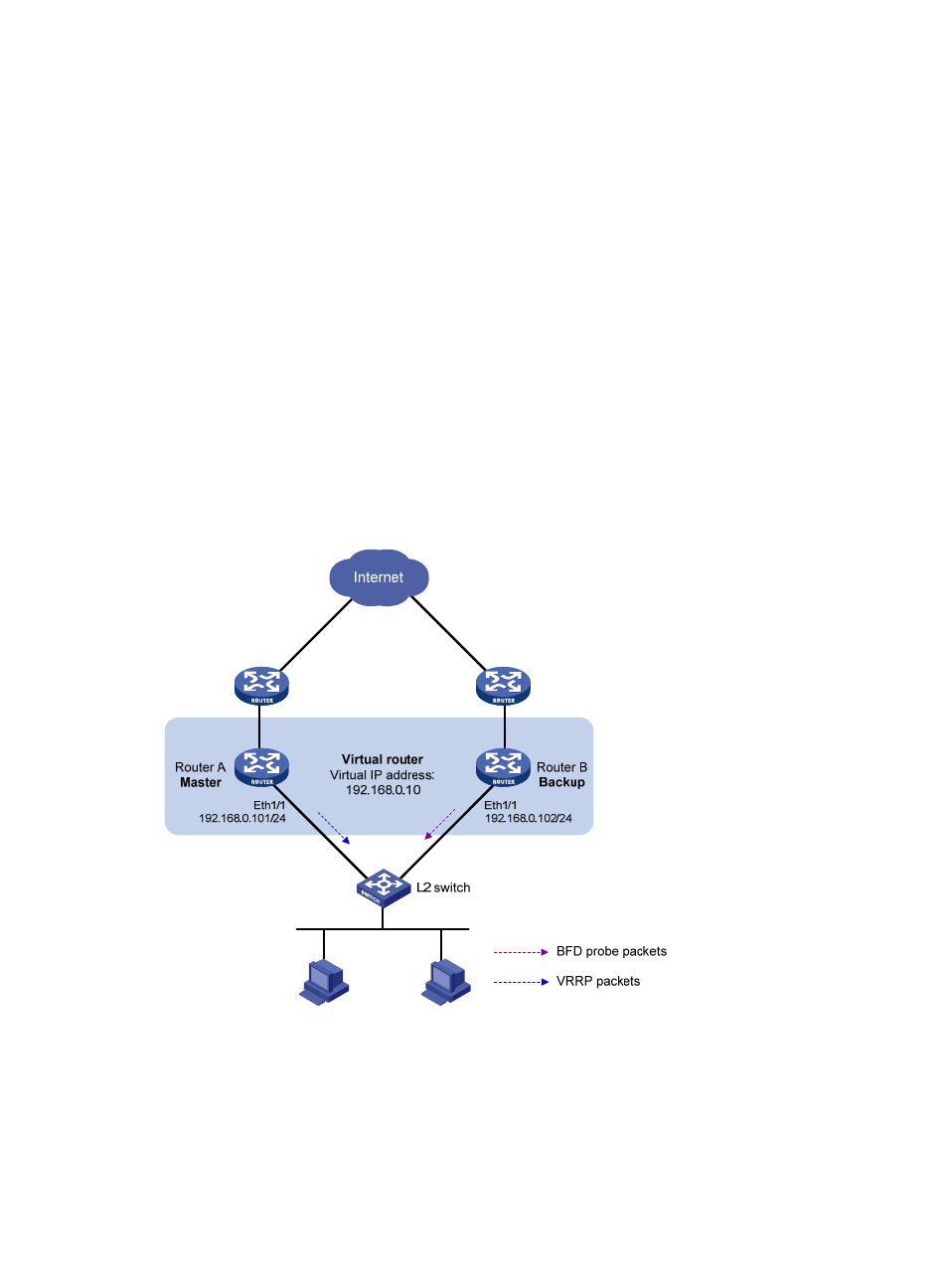Network requirements, Configuration procedure – H3C Technologies H3C MSR 50 User Manual
Page 44

36
Master IP : 10.1.1.2
The output shows that when a fault is on the link between Router A and Router C, the priority of Router
A decreases to 80. Router A becomes the backup, and Router B becomes the master. Packets from Host
A to Host B are forwarded through Router B.
Configuring BFD for a VRRP backup to monitor the master
Network requirements
As shown in
, Router A and Router B belong to VRRP group 1, whose virtual IP address is
192.168.0.10.
The default gateway of the hosts in the LAN is 192.168.0.10. When Router A operates correctly, the hosts
in the LAN access the external network through Router A. When Router A fails, the hosts in the LAN
access the external network through Router B.
If BFD is not configured, when the master in a VRRP group fails, the backup cannot become the master
until the configured timeout timer expires. The timeout is generally three to four seconds, which makes the
switchover slow. To solve this problem, VRRP uses BFD to probe the state of the master. Once the master
fails, the backup can become the new master in milliseconds.
Figure 12 Network diagram
Configuration procedure
1.
Configure VRRP on Router A:
[RouterA] interface ethernet 1/1
# Create VRRP group 1, and configure the virtual IP address 192.168.0.10 for the group. Set the
priority of Router A in VRRP group 1 to 110.
